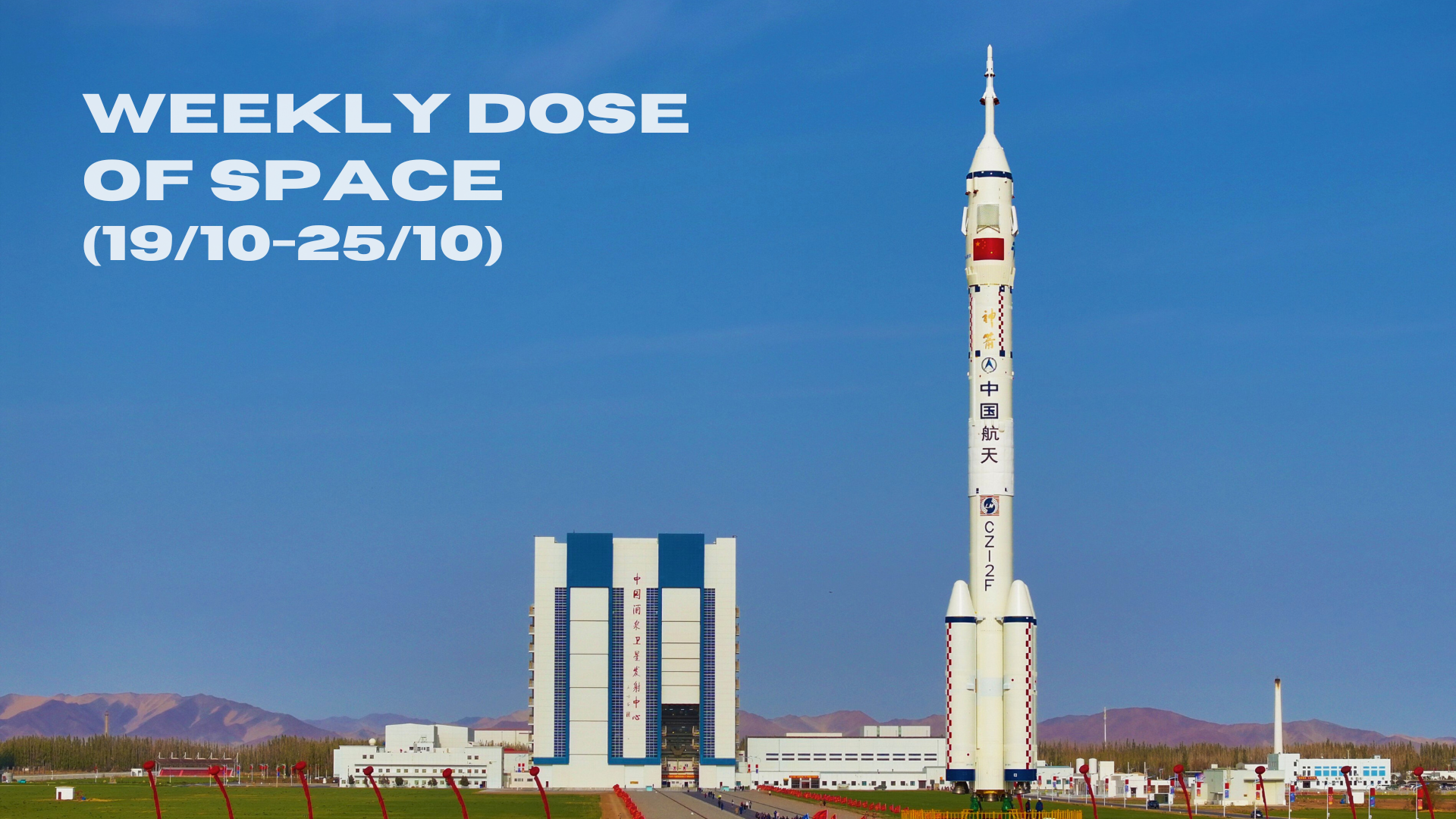Table of Contents
Welcome back to Weekly Dose of Space! This week had seven launches into Earth orbit, with the majority carrying Starlink satellites. News in the week had China gearing up for another crewed mission to its space station and an important space merger in Europe. As always, we'll also look ahead to what the worldwide launch schedule might look like next week.
Launches This Week
October 19th - Kinetica-1 with three satellites
CAS Space's Kinetica-1 blasted off from Launch Area 130 at the Jiuquan Satellite Launch Center, carrying two Chinese and one Pakistani satellites into sun-synchronous orbit. Pakistan's satellite onboard was PRSC-HS1, the country’s first hyperspectral imaging satellite, which is expected to support crop monitoring, natural resource monitoring, disaster responses, and city planning. The two Chinese satellites were AIRSAT-03 and AIRSAT-04, both X-band synthetic aperture radar remote sensing spacecraft with a similar task to PRSC-HS1.
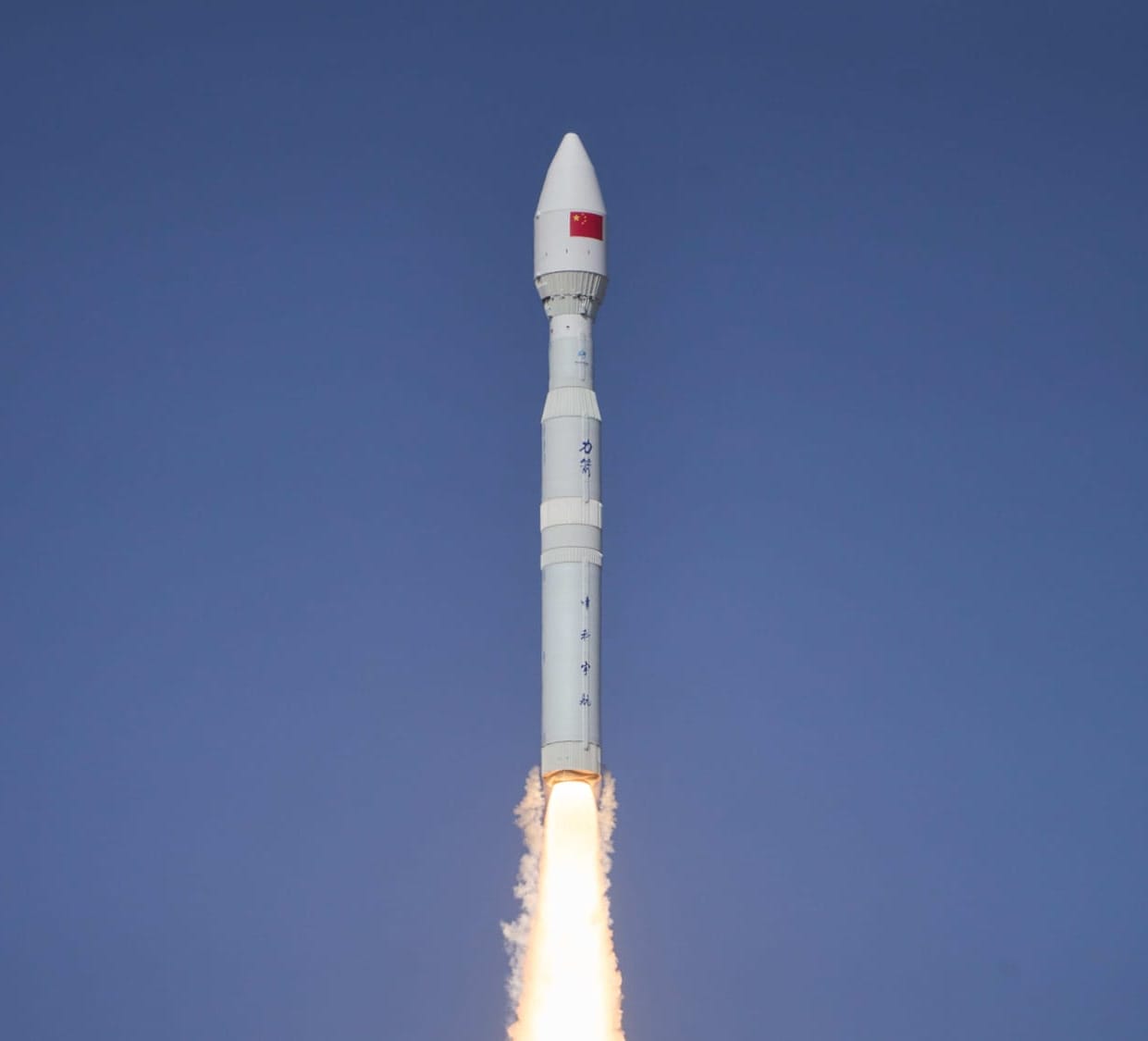
October 19th - Falcon 9 with Starlink Group 10-17
A Falcon 9 launched from Space Launch Complex 40, in Florida, carrying twenty-eight Starlink satellites into low Earth orbit. Supporting this mission was booster B1067 for its record-leading thirty-first flight, with a landing on the drone ship 'A Shortfall of Gravitas' downrange.
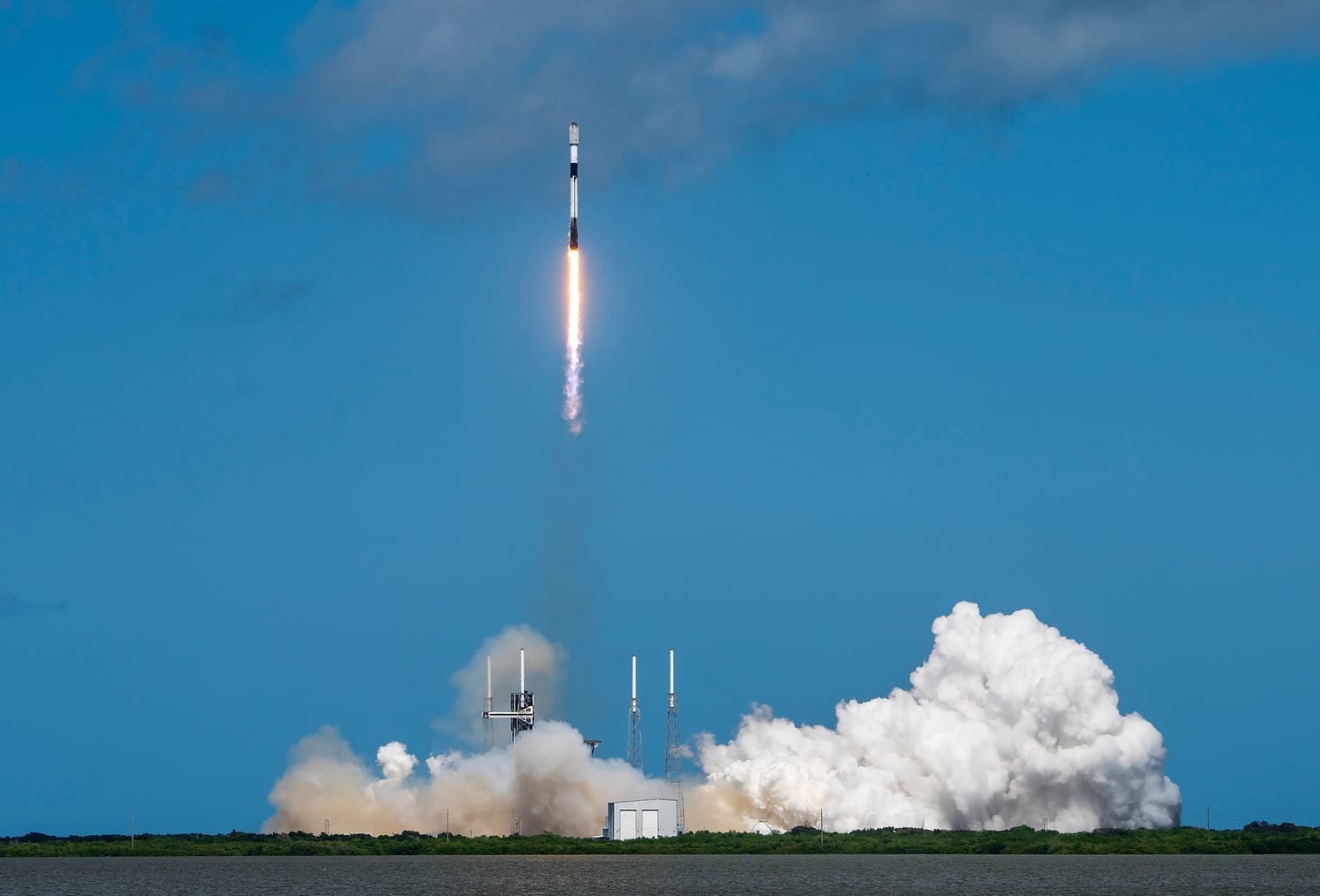
October 19th - Falcon 9 with Starlink Group 11-19
Another batch of twenty-eight Starlink satellites were delivered to low Earth orbit atop of a Falcon 9 flying from Space Launch Complex 4E, in California. Booster B1088 supported this mission, for its eleventh flight with a landing downrange on the drone ship 'Of Course I Still Love You'.
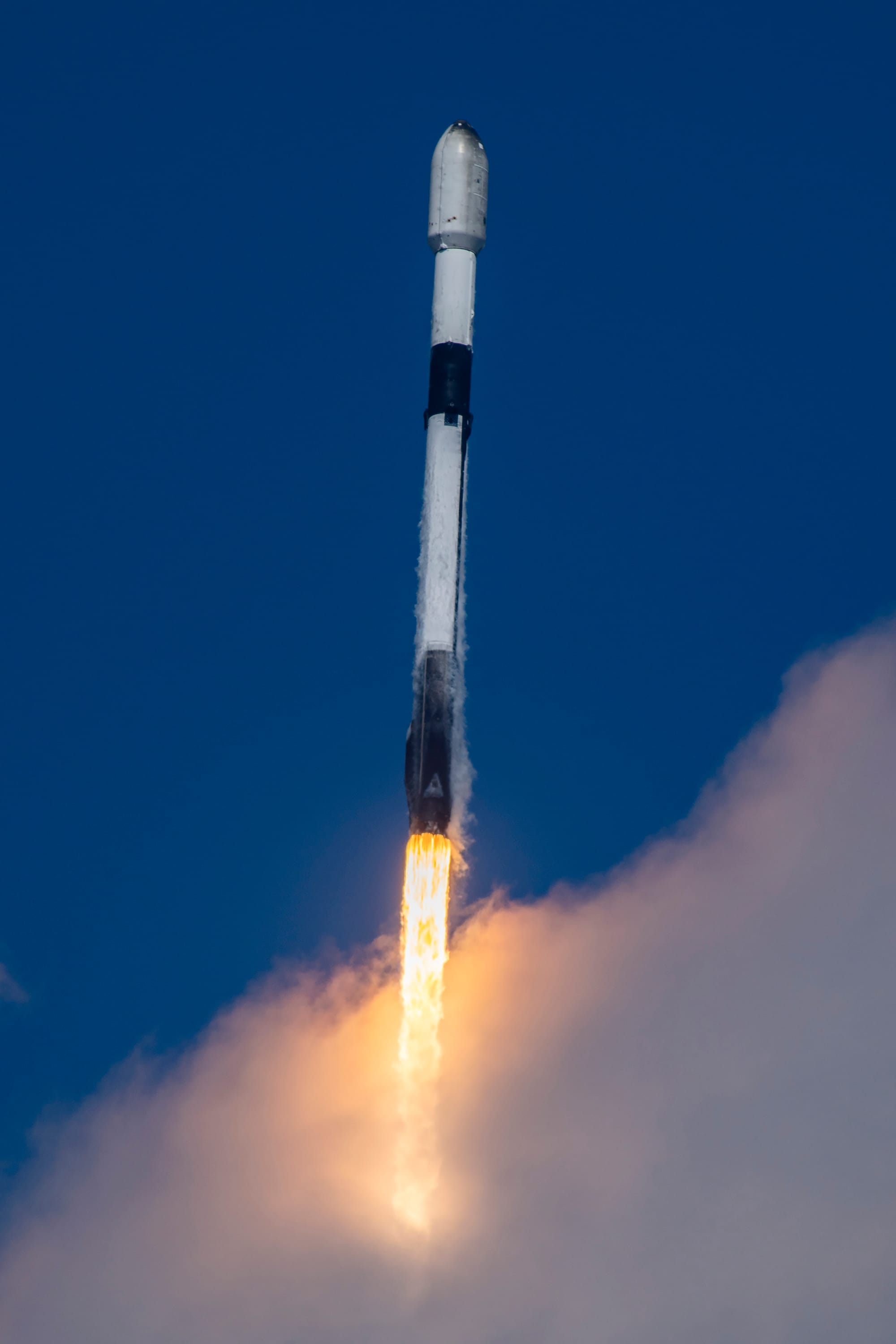
October 22nd - Falcon 9 with Starlink Group 11-5
Yet another set of twenty-eight Starlink satellites were flown into low Earth orbit by a Falcon 9 out of Space Launch Complex 4E. Supporting this launch was booster B1075 for its twenty-first flight, landing downrange on the drone ship 'Of Course I Still Love You' afterward.
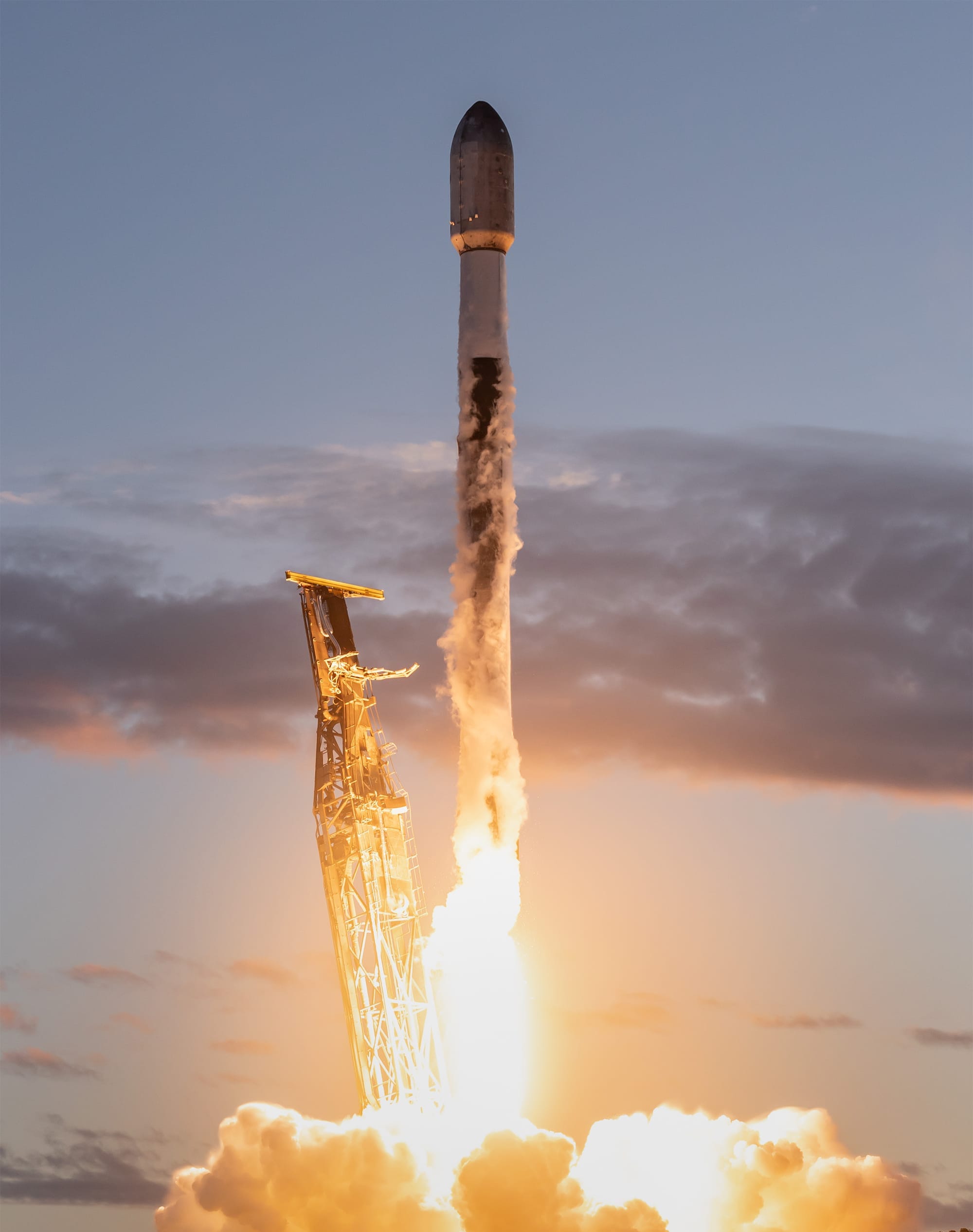
October 23rd - Long March 5 with TJSW-20
A Long March 5 with an 18.5-meter-long fairing lifted off from Launch Complex 101 at the Wenchang Space Launch Site, carrying the TJSW-20 spacecraft into a geostationary transfer orbit. Uses for the satellite are set to be communications, radio, television, and data transmission, with other tasks planned to be for verifying multi-band high-speed throughput communications technologies.
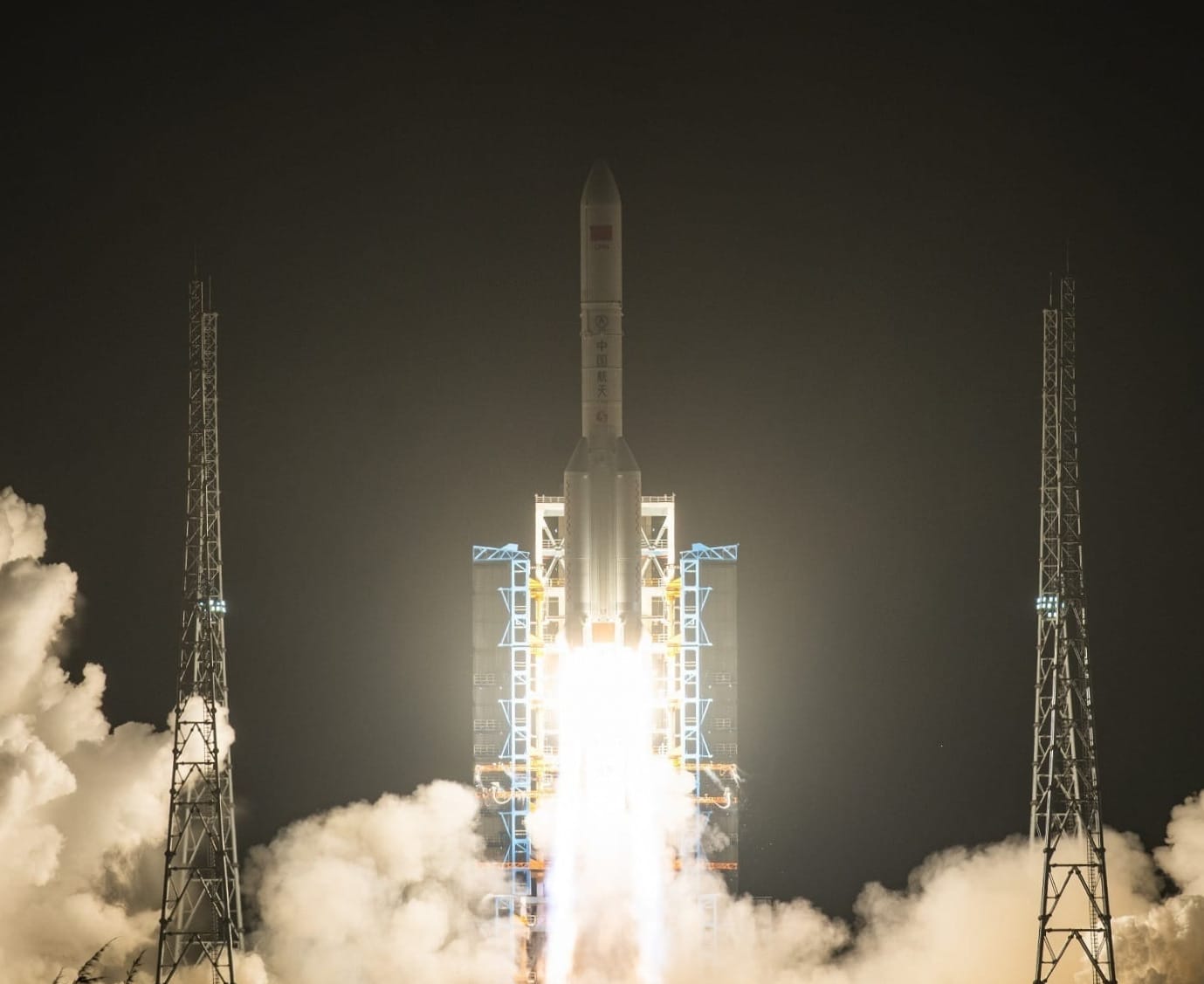
October 24th - Falcon 9 with SpainSat-NG II
SpaceX launched SpainSat-NG II into geostationary transfer orbit on behalf of the Spanish government from Space Launch Complex 40 atop of a Falcon 9. Booster B1076 supported this launch for its twenty-second and final flight. Spainsat-NG II is set to advance and expand the capacity of secure military communications.
Deployment of SpainSat NG II confirmed pic.twitter.com/4ZCbbcsgXr
— SpaceX (@SpaceX) October 24, 2025
Deployment of SpainSat-NG II after being placed into its transfer orbit as seen by Falcon 9's second-stage, via SpaceX on Twitter.
October 25th - Falcon 9 with Starlink Group 11-12
Yet another Falcon 9 delivered twenty-eight Starlink satellites into low Earth orbit from Space Launch Complex 4E. Supporting this mission was booster B1081 for its nineteenth flight, landing on the drone ship 'Of Course I Still Love You' downrange.
In Other Space News
Shenzhou-21 prepares for launch
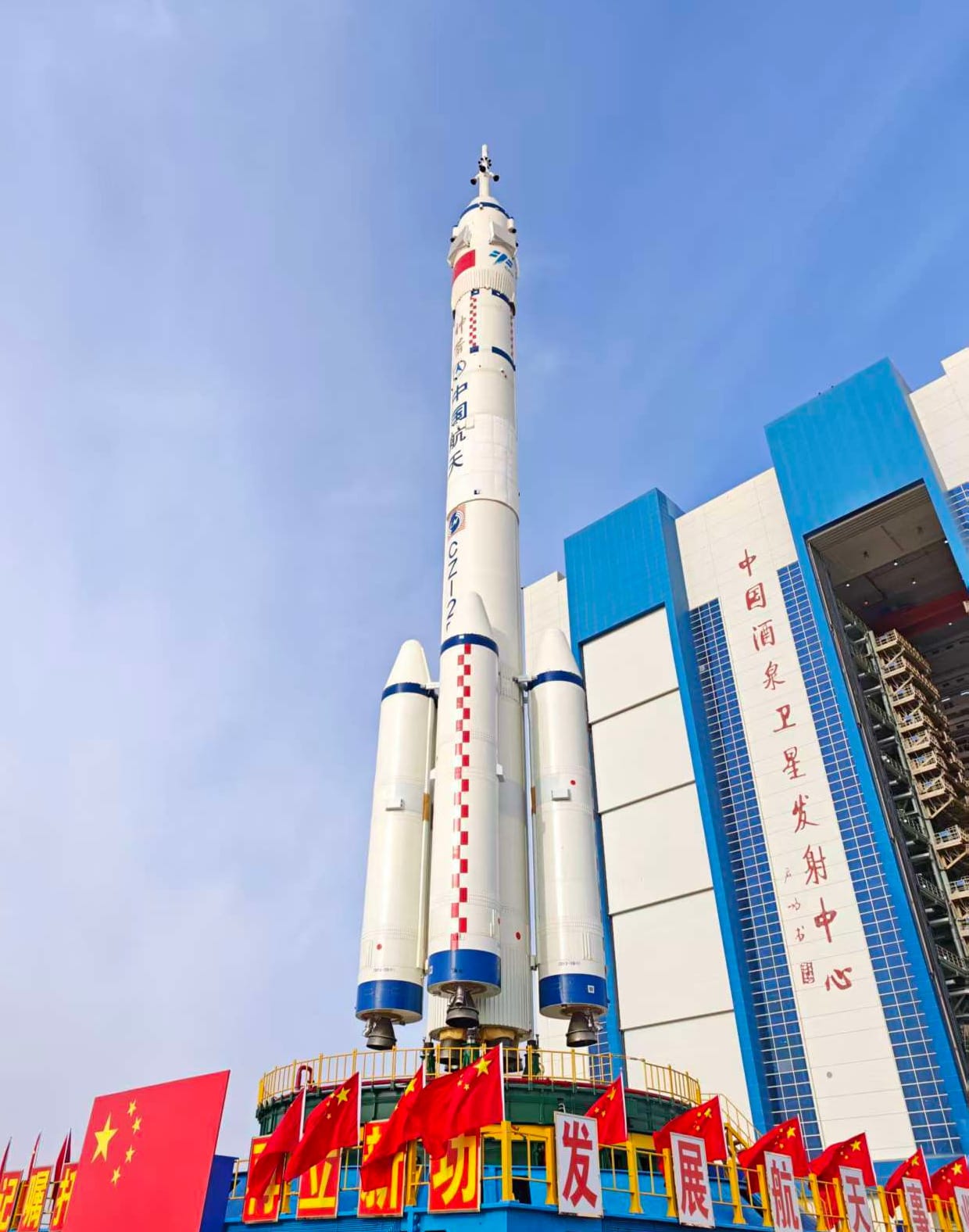
China's space agencies and enterprises are currently preparing to launch the Shenzhou-21 mission on a Long March 2F/G from the Jiuquan Satellite Launch Center. The mission, working toward an October 31st launch, will carry three taikonauts into low Earth orbit for a six-month mission on board the orbiting laboratory.
After arriving on board Tiagong, the Shenzhou-21 crew will spend about a week with the Shenzhou-20 trio, Commander Chen Dong, Operator Chen Zhongrui, and Science Operator Wang Jie, before they return to Earth in early November.
As is standard for China’s crewed missions, the names of the Shenzhou-21 crew are not currently known and will be announced in the days leading up to launch through two press conferences, first from management of the China Manned Space Agency and then when they meet the press.
Airbus, Leonardo, Thales to combine space businesses
European aerospace giants Airbus, Leonardo, and Thales have signed a Memorandum of Understanding on October 23rd aimed at creating a leading space enterprise by combining each of their space activities. Once created, the new enterprise will:
"[Aim] to strengthen Europe’s strategic autonomy in space, a major sector that underpins critical infrastructure and services related to telecommunications, global navigation, earth observation, science, exploration and national security. This new company also intends to serve as the trusted partner for developing and implementing national sovereign space programmes."
"This new company will pool, build and develop a comprehensive portfolio of complementary technologies and end-to-end solutions, from space infrastructure to services (excluding space launchers). It will accelerate innovation in this strategic market, in order to create a unified, integrated and resilient European space player, with the critical mass to compete globally and grow on the export markets."
To set up the new enterprise, Airbus will contribute with its Space Systems and Space Digital businesses, coming from Airbus Defence and Space, Leonardo will contribute with its Space Division, including its shares in Telespazio and Thales Alenia Space, and Thales will mainly contribute with its shares in Thales Alenia Space, Telespazio, and Thales SESO.
Once established, the company will be jointly owned by the three giants, with Airbus, Leonardo, and Thales owning respectively 35%, 32.5% and 32.5% stakes
What to Expect Next Week
October 26th - H3 with HTV-X
Japan is planning to launch its H3 rocket, with four solid rocket boosters for the first time, into low Earth orbit from the Tanegashima Space Center for the HTV-X's first resupply mission to the International Space Station.
October 26th - Long March 3B/E with an unannounced payload
A Long March 3B/E is preparing to launch from the Xichang Satellite Launch Center carrying a currently unconfirmed satellite into sun-synchronous orbit.
October 26th - Falcon 9 with Starlink Group 10-21
Falcon 9 is planning to launch from Space Launch Complex 40 carrying a batch of Starlink satellites into low Earth orbit.
October 27th - Falcon 9 with Starlink Group 11-21
Another batch of Starlink satellites are set to be delivered into low Earth orbit by a Falcon 9 flying from Space Launch Complex 4E.
October 28th - Falcon 9 with Starlink Group 10-37
Yet more Starlink satellites will be sent to low Earth orbit out of Space launch Complex 40 atop of Falcon 9.
October 28th - Hanbit-Nano for 'Spaceward'
South Korean startup Innospace is preparing to launch its solid-hybrid rocket Hanbit-Nano into low Earth orbit for the first time, from the Alcântara Launch Center in Brazil.
October 30th - Falcon 9 with Starlink Group 11-23
Falcon 9 will fly again, carrying even more Starlink satellites into low Earth orbit from Space Launch Complex 4E.
October 21st - Long March 2F/G with Shenzhou-21
China's Tiangong Space Station will have its latest crew of three astronauts carried into orbit onboard the Shenzhou-21 spacecraft atop of a Long March 2F/G flying out of the Jiuquan Satellite Launch Center.

